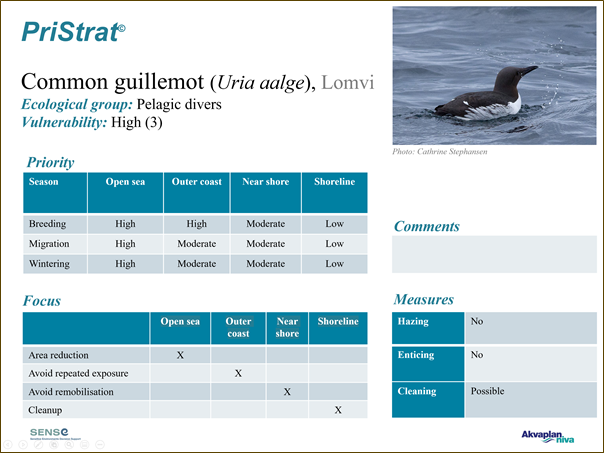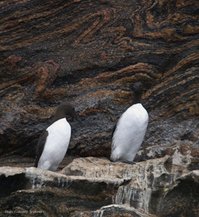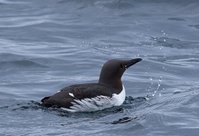Common Guillemot (Lomvi)
Common guillemots forage in coastal and open sea waters and breed in colonies on the coast. They are highly vulnerable to surface and shoreline oil.

General characteristics
Common guillemots spend most of the time on the water surface. Gathering of large flocks may lead to high mortalities. Oiled plumage will cause the bird to lose flotation and insulation. After breeding the male takes the flightless chick to sea, at which time they are also very vulnerable to oil on the surface near the colony. Common guillemots nest on narrow rocky shelves in the cliffs, usually too high up to be vulnerable to shoreline oiling.
Typical environmental zone
- Guillemot colonies are generally found in the outer coastal zone where they breed on open shelves in steep cliffs, often with Brünnichs guillemot (in the North) and with kittiwakes.
- Foraging range in the breeding season can be as much as 100 km from the coast.
- Outside the breeding season guillemots may be found in large flocks of several alcid (auk) species in the open sea far from the coast. These flocks gather in eddies with high production and presence of fish prey.
In case of oiling
- Dead birds should be collected for post-spill environmental surveys, which involves identification of the species. Handle only with protective equipment and store according to procedure for collecting
- If operator policy requires, oiled live birds should be collected by specialists in wildlife rehabilitation for treatment. Specialists and veterinaries trained in rehabilitation will decide whether to euthanise or rehabilitate the animal.


